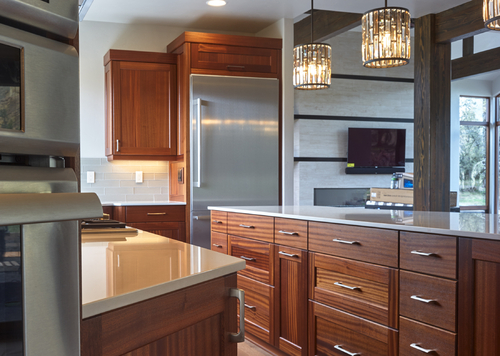Designing with Midcentury Modern Decor
Each week Mansion Global tackles an interior design topic with an elite group of designers from around the world who work on luxury properties. This week we look at how to design a Midcentury Modern space.
It’s equal parts sleek and modern, whimsical and minimalist. It’s got definitive style that’s instantly recognizable. Midcentury Modern is the kind of décor that’s transportive if done tastefully.
“It encompasses a very diverse and unique design by the use of multiple forms, styles, and adaptations through different mediums,” said Blima Ehrentreu CEO and founder of The Designers Group based in New York and Toronto. “To me, eclectic furniture, art, and lighting that pop truly defines a Midcentury Modern style.”
Incorporating this au courant look into your space is a fine balance between a home that’s decidedly chic and one that looks straight from the set of “Mad Men.” Here, design pros weigh in on the way to do Midcentury right.
Consider Color and Pattern
“For me, the style is all about clean lines and the stylish placement of one-off pieces.
“Colors such as burnt orange or olive greens give a midcentury feel especially when mixed with natural linens and wools. For a recent apartment we designed at South Bank Tower in London we incorporated a palette of green velvet, natural linens, and vintage rose gold.
“Have fun with the walls. Try a striking graphic, abstract wallpaper in the master bedroom, for example.”
Design is in the Details
“If you are looking to incorporate this look subtly, opt for furniture that embraces different forms. For example, a curved chair with straight legs, or a unique glass sculpture paired with a bold couch.
“We love layering lighting. Oftentimes we try to do a statement ceiling detail with lighting incorporated within the design, then go from there. We then add ambient lighting as needed to the space, topping it off with a suspended ceiling fixture and/or sconce. It is important to have the lighting be cohesive with other design elements of the space, yet smooth and not too overbearing—to maintain that polished look.
“Rugs can be used as either a statement piece, or simply a component that ties the design of the entire room together. It’s always good to bring in pops of color and patterns through rugs, as it gives a bit of life into the room.
“If we’re using a statement patterned wallcovering on one wall, the other walls will be a bit subtler. It’s never a bad idea to bring in pattern, it gives the space more of a lively atmosphere.
“Accessories are the final touch to tying the design together. Find a gorgeous oversized mirror with minimal design elements, and it can be a statement of its own.”
Be Strategic
“If you keep a neutral palette and stay away from ’60s prints you can really salvage any Midcentury piece. We prefer textured grasscloth in a neutral tone on the walls. Patterned wallpaper may be coming back, but that doesn’t mean it’s going to stay. Grasscloth is forever.
“Pendants using oversized drum shades are a timeless trend. Table lamps that harken to the movement also use drum shades, but they are taller and narrower. We try to stay away from arc floor lamps because they are impractical.
“Rugs with large-scale geometric patterns go well with any Midcentury pieces, but we like to use silk woven, solid rugs for a more muted feel.
“Accessories are what keep a midcentury-modern design in the here and now. Throw pillows can be an array of different designs or textures as long as they’re in the same color family.
“For the coffee table, we love stacking books at different levels and putting a tray or metallic sculpture on top.”
—Vian Abreu, senior interior designer at Manhattan-based Interior Marketing Group

